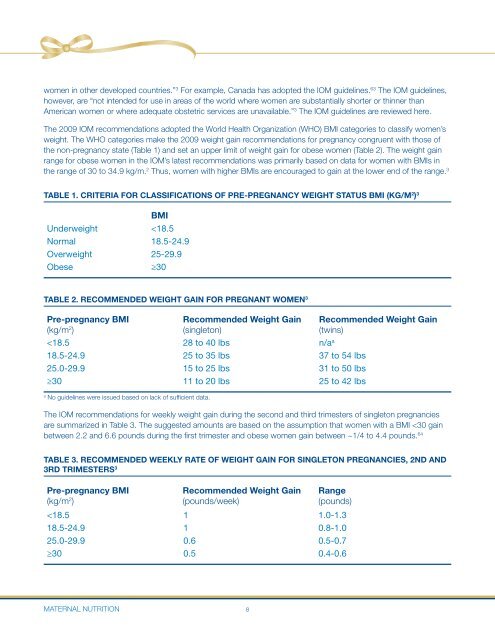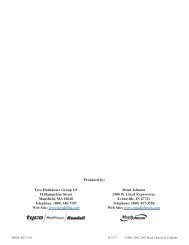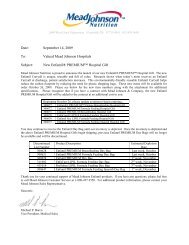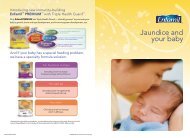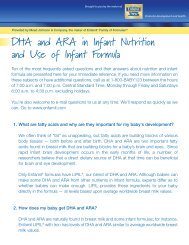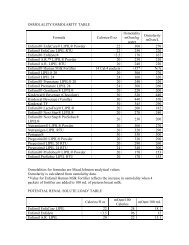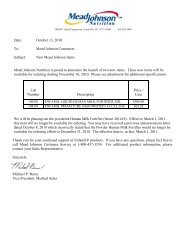LB2882MaternalNutriti+ - Mead Johnson Nutrition
LB2882MaternalNutriti+ - Mead Johnson Nutrition
LB2882MaternalNutriti+ - Mead Johnson Nutrition
Create successful ePaper yourself
Turn your PDF publications into a flip-book with our unique Google optimized e-Paper software.
women in other developed countries.” 3 For example, Canada has adopted the IOM guidelines. 63 The IOM guidelines,<br />
however, are “not intended for use in areas of the world where women are substantially shorter or thinner than<br />
American women or where adequate obstetric services are unavailable.” 3 The IOM guidelines are reviewed here.<br />
The 2009 IOM recommendations adopted the World Health Organization (WHO) BMI categories to classify women’s<br />
weight. The WHO categories make the 2009 weight gain recommendations for pregnancy congruent with those of<br />
the non-pregnancy state (Table 1) and set an upper limit of weight gain for obese women (Table 2). The weight gain<br />
range for obese women in the IOM’s latest recommendations was primarily based on data for women with BMIs in<br />
the range of 30 to 34.9 kg/m. 2 Thus, women with higher BMIs are encouraged to gain at the lower end of the range. 3<br />
TAbLE 1. CRITERIA FOR CLASSIFICATIONS OF PRE-PREGNANCY WEIGHT STATUS bMI (kG/M 2 ) 3<br />
bMI<br />
Underweight


